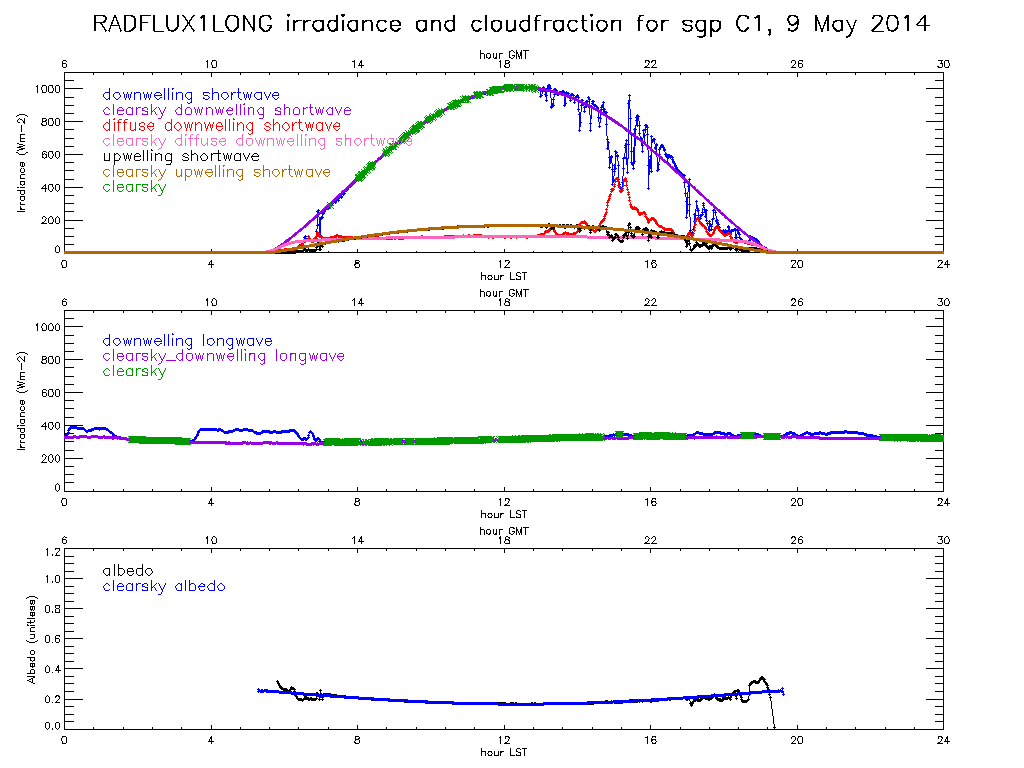 The Radiative Flux Analysis VAP estimates clear-sky shortwave (SW) and longwave (LW) surface fluxes. Clear-sky detection and fitting techniques (Long and Ackerman 2000; Long and Turner 2008) are used to identify clear-sky periods from broadband radiometers and empirically fit functions.
The Radiative Flux Analysis VAP estimates clear-sky shortwave (SW) and longwave (LW) surface fluxes. Clear-sky detection and fitting techniques (Long and Ackerman 2000; Long and Turner 2008) are used to identify clear-sky periods from broadband radiometers and empirically fit functions.
The SW clear-sky detection technique uses hemispheric, broadband total- and diffuse-shortwave irradiance measurements to identify clear-sky periods using the known characteristics of typical clear-sky irradiance time series. An empirical fitting technique is used to estimate clear-sky shortwave fluxes (Long and Ackerman 2000). The LW clear-sky flux estimation technique uses the SW identified daylight clear-sky data to refine the properties needed for 24-hour-a-day identification of LW clear-sky periods. Once these refined parameters and limits are determined, then additional clear-sky periods are identified and an empirical fitting technique is again used to continuously estimate clear-sky longwave fluxes.
The VAP also uses a technique (Long et al. 2006) to infer average fractional sky cover from SW measurements for solar elevation angles 10° or greater, with an accuracy of about 10% compared to a total sky imager (TSI). Fractional sky cover is also estimated from LW fluxes using a method similar to that described in Durr and Philipona (2004). Other retrieved parameters include cloud optical depth for overcast skies (Barnard et al. 2008), cloud transmissivity, and cloud radiating temperature.

